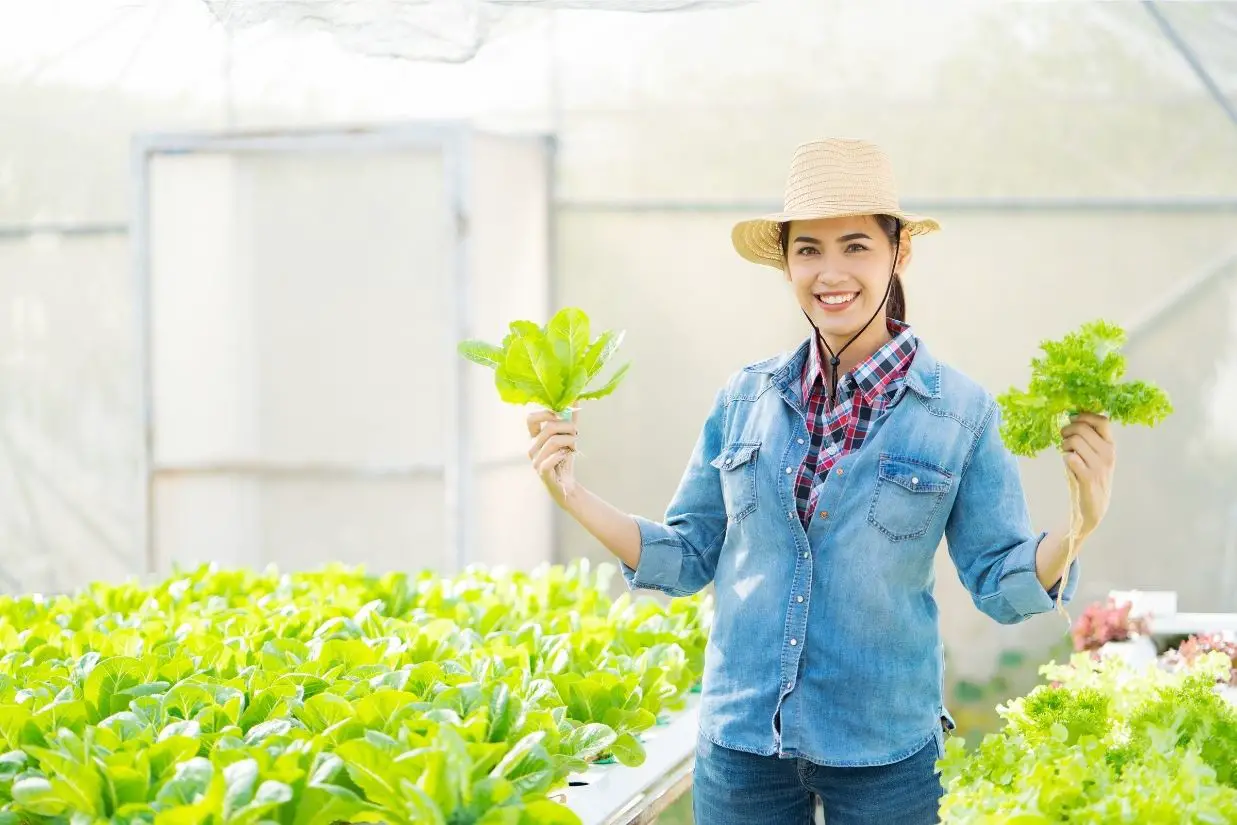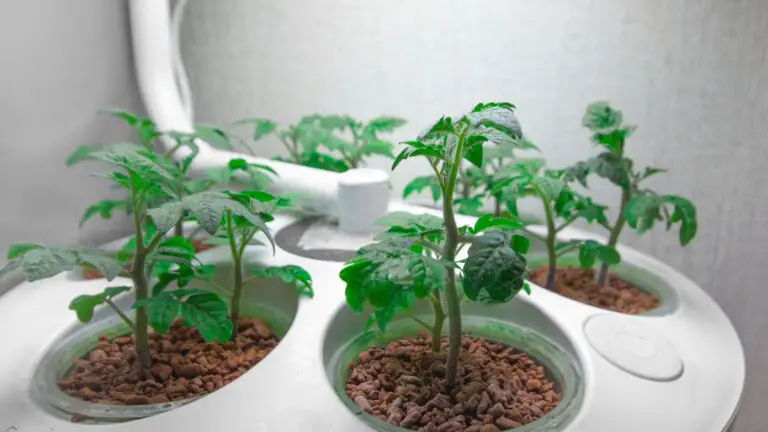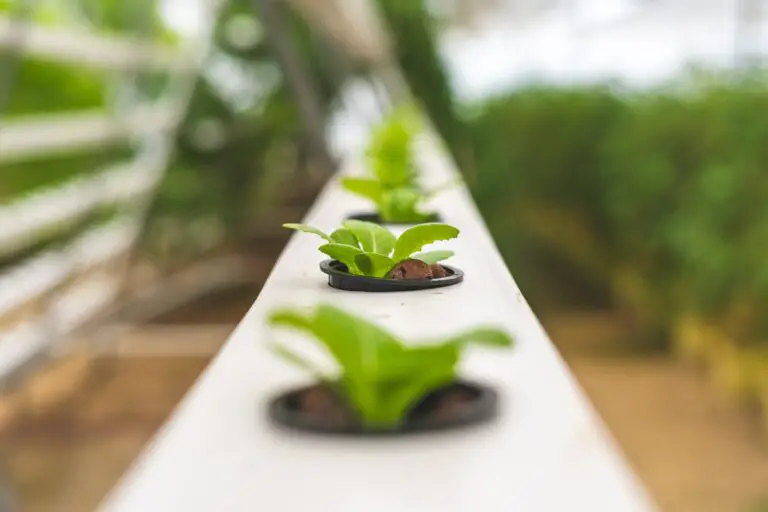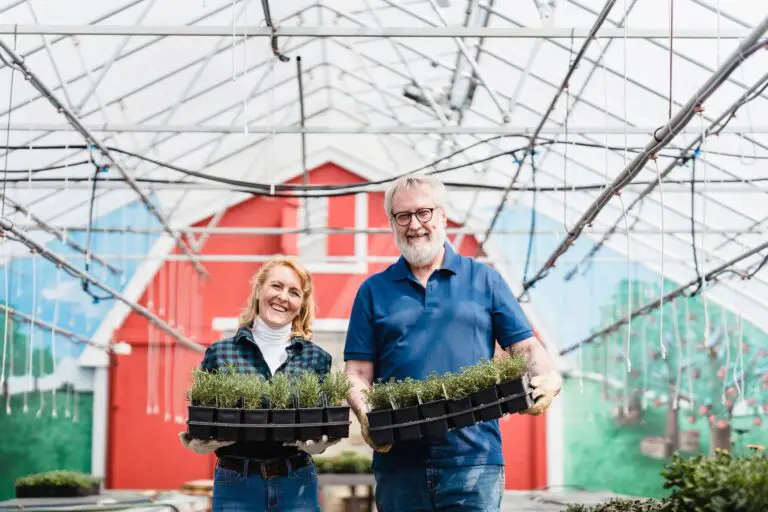Why Is Hydroponics Farming Increasing in Popularity?
Disclosure: Your purchases through our links may earn us a small commission, supporting our site’s ability to provide valuable information to our readers. Rest assured, it won’t impact your price. Thank you for your support.
In this fast-paced world, it is easy to forget the importance of living a healthy and eco-friendly life, especially in urban areas. We are so focused on getting ahead that we often sacrifice our well-being. However, with the current state of the world, it is becoming increasingly important to reevaluate our lifestyles and make some changes.
One way that people are combatting these challenges is by turning to hydroponic plants growth. Hydroponics is a method of farming where crops are grown in water instead of soil. There are various hydroponic setup available. They are namely NFT (nutrient film technique), ebb and flow system, kratky method, deep water culture system, drip, aeroponics and more. This method to produce food has been around for centuries, but it is becoming more popular because of its many benefits. It is a more efficient use of resources. It also produces healthier crops and has a higher yield than traditional soil based systems.
So Why Is Hydroponics Farming Popularized?
1 . Location is not restricted
Hydroponic farming can be done almost anywhere because it is based on a controlled environment. You can cultivate plants in a desert, an ice cap, or even in space! The plant roots get the water and essential nutrients they require without depending on sunlight or rain to survive. This allows plants grow in areas where traditional agriculture is not viable.
2 . Less space required
Many people choose hydroponic farming because it allows them to grow crops in less space. This is important for people who live in urban areas where land is scarce. You can set up hydroponic system on rooftops, balconies, and even inside homes. Further, vertical farming is a more environmentally friendly form of agriculture than conventional farming because it requires far less land and water. Vertical farming allows farmers to place many plants in a limited amount of space instead of traditional methods that rely on rows or rows of crops. Growers may fit additional plants into a given area by growing veggies vertically rather than horizontally. This means you can do vertical farming in urban areas with little space for traditional farming.
3 . Resource optimization
Crop production is also referred to as hydroponics or container agriculture. It involves growing plants in water mixed nutrient solution reservoir without the use of soil. Controlled crop production optimizes the water, nutrient, and light supplied to the plants. To improve growth, you may carefully monitor and plan water and nutrient solution in plants. This type of agriculture is widely practiced in many parts of the world, particularly in countries with limited arable land.
4 . Less water requirement
Hydroponics is that it is a very efficient use of resources. In traditional farming, a lot of water is lost to evaporation and runoff. With hydroponic farming, the plants use all water and nutrient solution, so there is very little waste. This makes it possible to grow more food with less water which is essential as global water shortages become more common and fewer negative impacts on the environment. By using hydroponics, farmers can reduce their water usage by up to 90%. Here water is recirculated and reused. This is a crucial factor in a country like Australia, where water is scarce. Hydroponic systems can be designed to recycle the water used, further reducing the amount needed.
Related:
How Often Should You Water Seedlings in Rockwool Hydroponic?
How Often to Water Your Plants With the Kratky Method?
How to Water Your Hydroponic Potatoes?
7 Watering Tips for New Hydroponic Gardeners
5 . Light utilization
The light utilized in hydroponic farm is focused on the wavelengths of light that plants most readily absorb. This is done to maximize the amount of energy supplied to the plants. This helps to minimize wasted energy. Also, because the plants are not competing with other plants for light, they can be grown closer together, reducing the energy needed to grow a given number of plants.
6 . Possible uninterrupted continuous harvest
This farming model can result in significantly more growth cycles than traditional practices, with multiple times more growth possible. The use of soil-less growing allows crops to be planted and harvested continually, without any necessary waiting period. More crops can be produced in a smaller space, making it an efficient solution for small-scale and large-scale farming operations.
7 . Resistant to invasive species.
Pesticides have not been able to make our agriculture industry entirely resistant to invasive species. By farming indoors, we can eliminate the risk of crop vulnerability to extreme circumstances and to more common, lower grade pest invasions. This makes indoor farming a much more reliable and sustainable way to grow our food supply.
8 . Easy to isolate diseased or drying crops
Hydroponic farming offers a quick and easy way to isolate diseased or dying crops. Identifying and removing compromised plants can be difficult and time-consuming on a traditional farm. However, in a hydroponic farming, each unit can be treated separately, making it much easier to manage any potential problems.
9 . Reduce the use of harmful herbicides and pesticides
A secure indoor growing environment includes protection against harmful pests and microbial diseases. Pesticides can contaminate water sources, affect non-targeted insects and plants, eliminate beneficial soil microbes, and be linked to human breast cancer. Traditional agriculture uses intense applications of herbicides and pesticides to protect crops from these threats, but these chemicals can harm humans and the environment. More than 1 billion pounds of pesticides in the US alone are used annually, most of which the agriculture industry utilizes. Reducing our reliance on these chemicals is crucial for protecting our health and the environment.
10 . Growing healthier plants
Hydroponics is gaining popularity is that it allows farmers to produce healthier plants. This is because plants grown in hydroponic systems are not exposed to soil-borne diseases and pests as the plants are grown in a controlled environment. In addition, hydroponics farmers can use fewer pesticides and herbicides because the hydroponic plants are grown in a controlled environment, and fewer chemicals are released into the atmosphere.
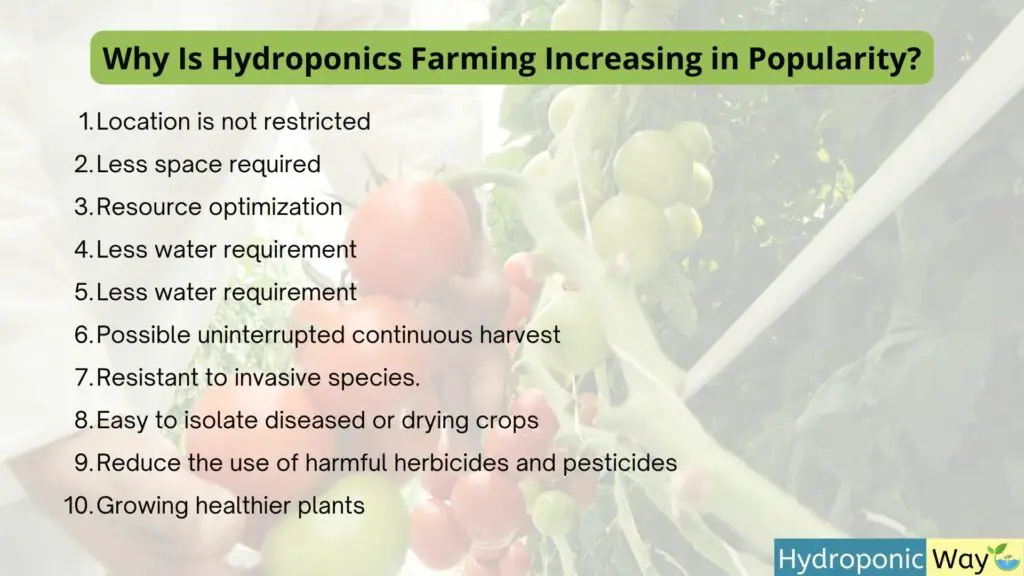
So, there you have it!
With the many benefits, it’s no wonder that more and more people are choosing to grow their crops using hydroponics. These are just a few reasons why hydroponics is becoming more popular.
Overall, it is clear that hydroponic farming system is a more efficient and effective way of growing crops. With the world facing many challenges, it is crucial to turn to sustainable methods of agriculture that will have a positive impact on the environment, our health, and our economy. What are your thoughts on hydroponics? Let us know in the comments below!
Also learn the useful tips to make your hydroponic gardening more sustainable.
Thank you for reading!
If you are interested in starting hydroponic system at your home, click the following links to select the best products through Amazon.

